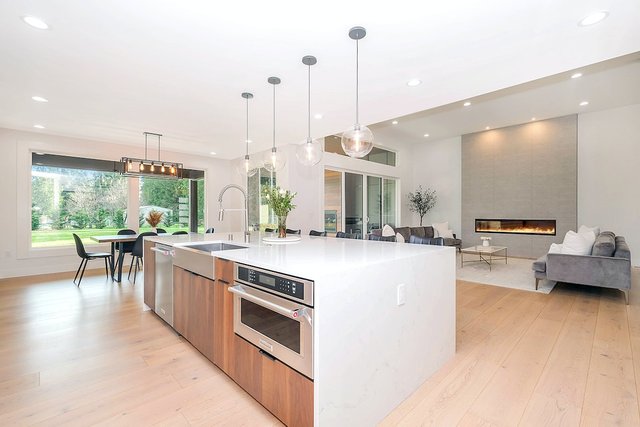Many homeowners tackle home renovations as a way to increase their enjoyment of the home, but for others, it’s all about investment. When this is the case, you need to think differently about home renovations.
When renovating to increase the value of your home, the key is to keep the budget down while maximising return. You don’t increase the value of the home by the cost of the renovation, so make sure every dollar counts. Invisible improvements - replacing the air conditioner and water heater, for example, will return almost no value for an investor, but would provide added value for a person living within the home.
When renovating for investment, wear an investor hat in every renovation decision you make and find ways to cut costs without compromising on quality. Low cost doesn’t mean you need to skimp, you just need to spend strategically.
Low-Budget Renovation Rules To Boost Your Home’s Value
1) Start in the kitchen
The kitchen is the heart of the home and therefore it makes sense to start there. A kitchen can be a make or break when determining a home’s value, but how you make over your kitchen will depend on its age and condition. A small kitchen may require some walls to be moved to build on space, but if the general flow is already functional, a quick modernisation may be all it needs. If it ain’t broke…keep the current layout and instead focus on a cosmetic makeover. Scrub your appliances inside and out, install a fabulous new mixer tap, apply a couple of coats of bright, neutral colour, restain the timber, replace the cabinet doors or handles, remove cupboard doors completely so that you have open shelving, modernise the splashback or replace the benchtop - these are all budget-friendly ideas that make a big impact.
2) Consider your curb appeal
Curb appeal is all about the picture you present to buyers as they enter your home. Your curb appeal should be welcoming and inviting so that buyers can imagine themselves arriving home each day with a smile. First impressions count, so look for ways to create a defined entrance, make the garden look well-maintained and manageable, and ensure the facade looks in good condition. Stand on the street and look at your home with new eyes. Is the fencing in good condition? Is the pathway clear? Are the shrubs neat and is the roof clean? A few small fixes can go a long way.
3) Provide a retreat
These days, people want more than just function from their bathrooms. Luxurious amenities and finishes are in high demand, as people want a resort-feel retreat to come home to. Today’s bathrooms are about indulgence and relaxation, not just cleanliness.
One quick way to create an opulent bathroom is to replace a fitted bath with a free-standing bath. Compliment this with a neutral tile and a fresh lick of white paint and you can’t fail to impress. Opt for accessories in bamboo or stone and keep the overall look fresh, clean, and clutter-free.
4) Boost the backyard
The landscaping elements of a house exterior can have a big impact on the overall impression of your home, so why not bring the outside in and vice versa? Retractable fly screens not only expand the utility of your indoor and outdoor spaces, but they also maximise enjoyment and aesthetics. Installed on both doors and windows, they effortlessly allow you to transition from inside to out. An appealing outdoor area can also be improved with new paving, and a lawn can be boosted with new turf and some tidied-up edging and plants.
5) Look down
The flooring of your home can make a big impact on its overall value and while solid hardwood flooring has the greatest impact on increasing home value, it comes with a high price tag. Engineered timber flooring will also increase home value and it’s almost indistinguishable from solid timber flooring. It’s cheaper and durable too.
6) Sell the style
Bright-coloured decor can polarise future buyers and stop them from making a high bid on your home. You can’t go wrong with neutrals, so soften your style and evoke a timeless elegance. With a neutral colour scheme, buyers are purchasing a foundation on which they can put their own stamp. You’re providing them with a blank canvas, allowing them an opportunity to envision how they will personally style the home. Don’t confuse neutral with clinical though - your neutrals should still offer a cosy style that’s inviting. With this in mind, you may like to introduce some warmer colours and some homey touches.
Sticking to a Budget
No matter what your reasons are for renovating, it all starts with deciding on a budget to see your plans through. The best way to do this is to draw up a list of priority renovations. You can then divide this list into ‘must-haves’ and ‘nice-to-haves’.
The other important step when determining a budget is to get multiple quotes for the work you want to undertake. Look for builders and installers who offer a no-obligation free quote, so that you can save money during the decision stage.
Always use the current market value of your home as a base for working out how much you want to spend. As a general rule of thumb, aim to keep your renovation costs lower than 10% of what your home’s currently worth.
Happy renovating!
